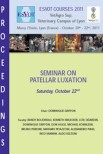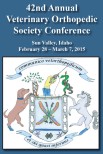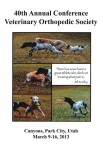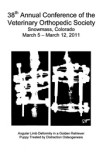Footrot, including interdigital dermatitis, is caused by Dichelobacter nodosus cause the majority of lameness in sheep in the UK. Lame sheep often have overgrown hoof horn but recent evidence has indicated that trimming overgrown hoof horn increases recovery time, and that routine foot trimming of the flock does not reduce the prevalence or incidence of lameness. The objectives of this study were to investigate the temporal associations between hoof horn length, footrot and climate. Fifty multiparous ewes were monitored for 10 months. On eight occasions hoof horn length, foot lesions and body condition were recorded. At the first examination, ewes were assigned to one of two treatment groups. All ewes that became lame with footrot were treated at one time point per week, either by trimming hoof horn and applying a topical antibiotic spray or with parenteral antibiotic and topical antibiotic spray.
Hoof horn length in ewes at pasture varied over the year and was associated with temperature and rainfall. New cases of footrot occurred all year round and were associated with prior prevalence of footrot in the flock and prior temperature and rainfall. Overgrown hoof horn did not precede lameness but occurred once the sheep were lame. One year of prompt treatment of footrot reduced the range in hoof horn length in the sheep in both treatment groups. At the end of the study the hoof lengths of ewes in both groups were not significantly different. On this farm, hoof horn length was self-regulating in both non-lame and treated lame sheep whether trimming was part of the treatment or not and there would have been no benefit from routine foot trimming of this flock.









